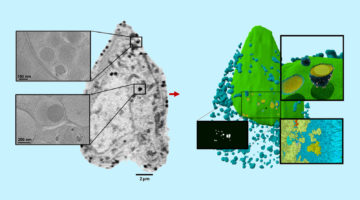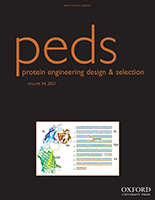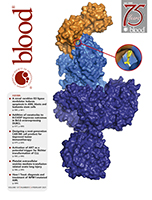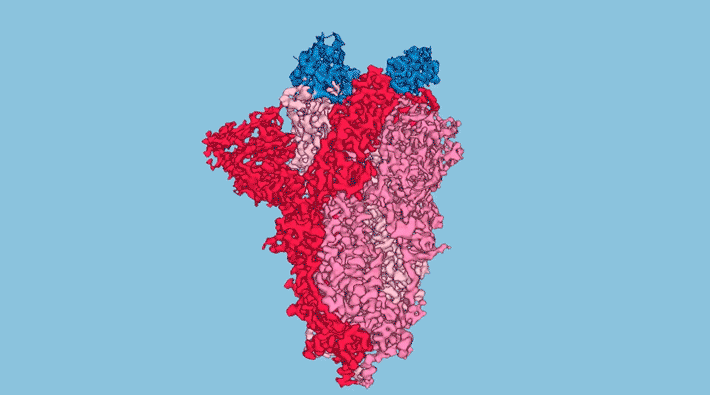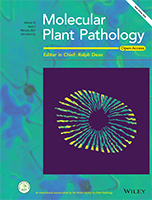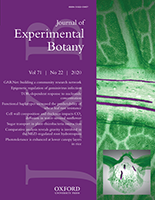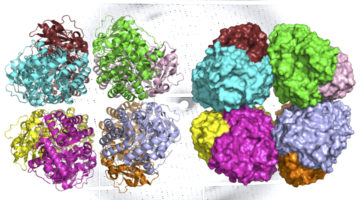Researchers used soft x-ray tomography to gain a 3D whole-cell view of how insulin-producing pancreatic cells react upon exposure to glucose and a diabetes drug. The approach enables direct quantification of intracellular responses before, during, and after cell stimulation, providing new insights into how drugs alter cell function. Read more »![]()
![]()
Construction, characterization and crystal structure of a fluorescent single-chain Fv chimera
In vitro display technologies based on phage and yeast have a successful history of selecting single-chain variable fragment (scFv) antibodies against various targets. However, single-chain antibodies are often unstable and poorly expressed. We explore the feasibility of converting scFv antibodies to an intrinsically fluorescent format by inserting a monomeric, stable fluorescent protein between the light- and heavy-chain variable regions. Read more »
CC-90009, a novel cereblon E3 ligase modulator, targets acute myeloid leukemia blasts and leukemia stem cells
A number of clinically validated drugs have been developed by repurposing the CUL4-DDB1-CRBN-RBX1 (CRL4CRBN) E3 ubiquitin ligase complex with molecular glue degraders to eliminate disease-driving proteins. Here, we present the identification of a first-in-class GSPT1-selective cereblon E3 ligase modulator, CC-90009, that targets acute myeloid leukemia blasts and leukemia stem cells. Read more »
A Detailed Look Inside Tsetse Flies
To better understand the unique reproductive biology of tsetse flies, which are carriers of the parasites that cause a deadly infection known as African sleeping sickness, researchers explored the intact organs and tissues of tsetse flies using a powerful 3D x-ray imaging technique at Berkeley Lab’s Advanced Light Source. Read more »
Inhalable COVID-19 Protection via Synthetic Nanobodies
Protein structures obtained in part at the ALS helped researchers to increase the potency of simplified antibodies (nanobodies) designed to neutralize SARS-CoV-2. Stable enough to be used in inhalers or nasal sprays, the nanobodies offer a new option, aside from injected vaccines, for COVID-19 prevention and treatment. Read more »![]()
![]()
Xylella fastidiosa causes transcriptional shifts that precede tylose formation and starch depletion in xylem
During Pierce’s disease, Xylella fastidiosa triggers transcriptional changes in grapevines and induces major physiological responses, including tylose formation and starch depletion. X-ray computed microtomography and a machine-learning algorithm were used to track the depletion of starch reserves in the xylem of a grapevine stem infected with Pierce’s disease. Read more »
The Odd Structure of ORF8: Scientists Map the Coronavirus Protein Linked to Immune Evasion and Disease Severity
Researchers determined the atomic structure of a coronavirus protein thought to help the pathogen evade and dampen response from human immune cells. Researchers determined the atomic structure of a coronavirus protein thought to help the pathogen evade and dampen response from human immune cells. Read more »
Unique X-Ray Microscope Reveals Dazzling 3D Cell Images
Researchers used soft x-ray tomography to reveal never-before-seen details about insulin secretion in pancreatic cells taken from rats. By quantifying subcellular rearrangements in response to drugs, the results are an important first step for bridging the longstanding gap between structural biology and physiology. Read more »
Coordinated decline of leaf hydraulic and stomatal conductances under drought is not linked to leaf xylem embolism for different grapevine cultivars
Drought decreases water transport capacity of leaves and limits gas exchange, which involves reduced leaf hydraulic conductance (Kleaf) in both the xylem and outside-xylem pathways. We combined Kleaf and gas exchange measurements, micro-computed tomography of intact leaves, and spatially explicit modeling of the outside-xylem pathways to evaluate the role of vein embolism and Kleaf in the responses of two different grapevine cultivars to drought. Read more »
Newly Discovered Photosynthesis Enzyme Yields Evolutionary Clues
Scientists have discovered a primitive form of rubisco, a photosynthesis enzyme that has helped shape life on Earth. Detailed information about its structure, determined using complementary techniques at the ALS, will help scientists understand how carbon-fixing organisms oxygenated the atmosphere and how modern plants evolved. Read more »
- « Previous Page
- 1
- …
- 7
- 8
- 9
- 10
- 11
- …
- 24
- Next Page »
